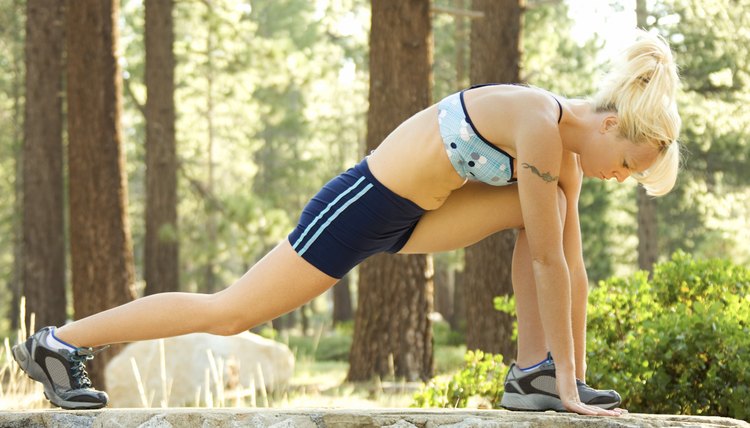What Muscle Groups Are Used to Flex the Knee?

You flex your knee countless times throughout the day. Every time you walk, squat, jump, kneel or perform many other day-to-day movements, you use your knees and the connected muscles. Identifying these muscles and keeping them strong will alleviate knee pain, reduce incidences of future injury and help you maintain mobility.
Flexion Thigh Muscles
The hamstring muscles, in the back of your thighs, are primarily responsible for flexing your knees. Made up of the biceps femoris, semitendinosus and semimembranosus, this muscle group attaches to various locations on your tibia or knee bone. Two other thigh muscles also assist in knee flexion. The sartorius runs from your outer hip diagonally along the front of your thigh to your inner knee and helps to flex your knee. Your gracilis runs along your inner thigh and is also involved, to some degree, in knee flexion and rotation.
Flexion Muscles in Lower Legs
The muscles in your lower legs also play a role in knee flexion. Your gastrocnemius, the main calf muscle, runs behind your knee from your lower femur to your achilles tendon. It is responsible for flexing both your knee and your ankle. Your popliteus is a much smaller muscle, also known as your knee flexor. It runs behind your knee from the inside of your upper calf bone to the outside of your tibia and is responsible for bending your knees and rotating them inward.
Extensor Muscles
If you bend or flex your knees, chances are you’ll need to straighten or extend them to return to your original position. Your quadriceps muscles in the front of your thighs are also connected to your tibia and responsible for opening your knee joint. Your quadriceps are made up of four muscles, namely the rectus femoris, vastus lateralis, vastus intermedius and vastus medialis.
Muscle Weakness and Knee Issues
A lack of muscular strength and flexibility is among the leading causes of knee injuries, according to the Mayo Clinic. Weak hamstrings or quadriceps can place extra strain on the knee joint and lead to knee pain or injury. Similar issues can arise from tight or inflexible muscles that are related to the knee joint. To avoid knee pain and injuries, it is important to strengthen all your lower-leg muscles and to stretch them through a full range of motion after every workout.
References
Resources
Writer Bio
Andrea Chrysanthou began writing professionally in 1993. Her work has been published internationally by "The Cyprus Mail," MochaSofa and My Favorite Trainer, among other magazines and websites. She holds a Bachelor of Applied Arts in journalism from Ryerson University. Chrysanthou is a certified fitness instructor and personal-training specialist with more than 10 years of experience in the fitness industry.
